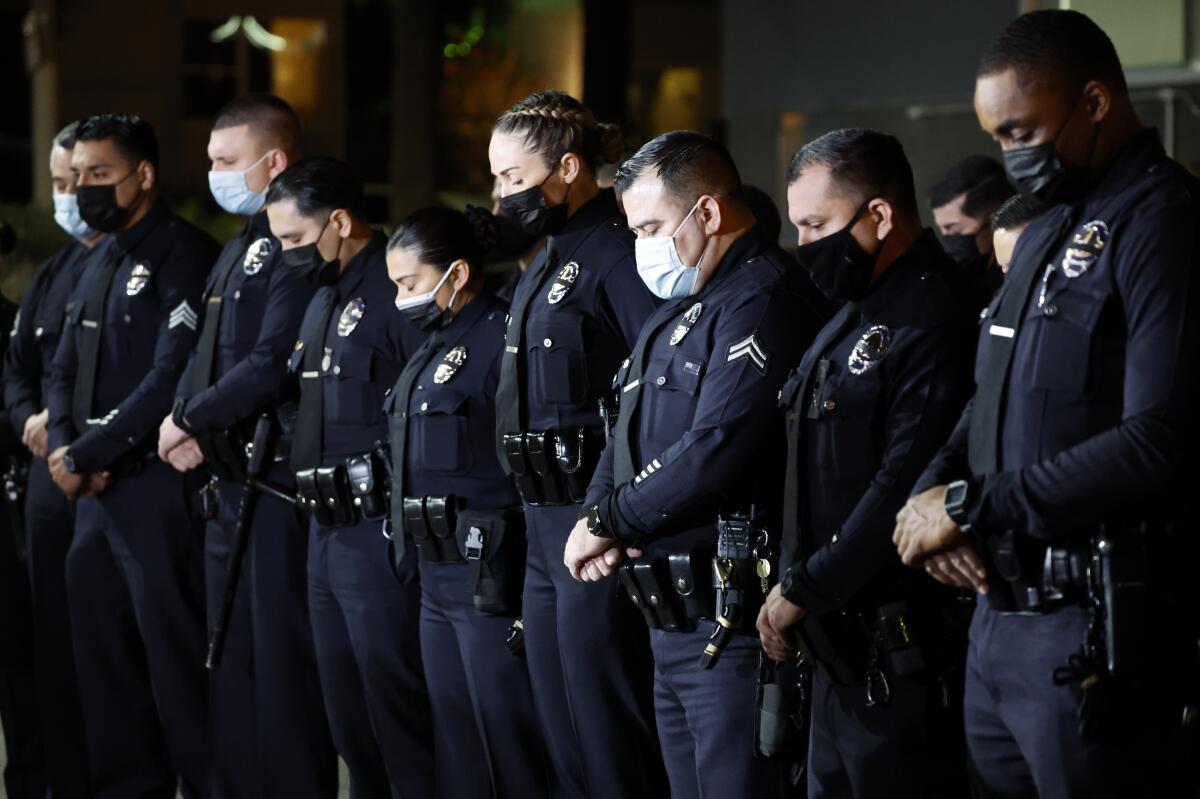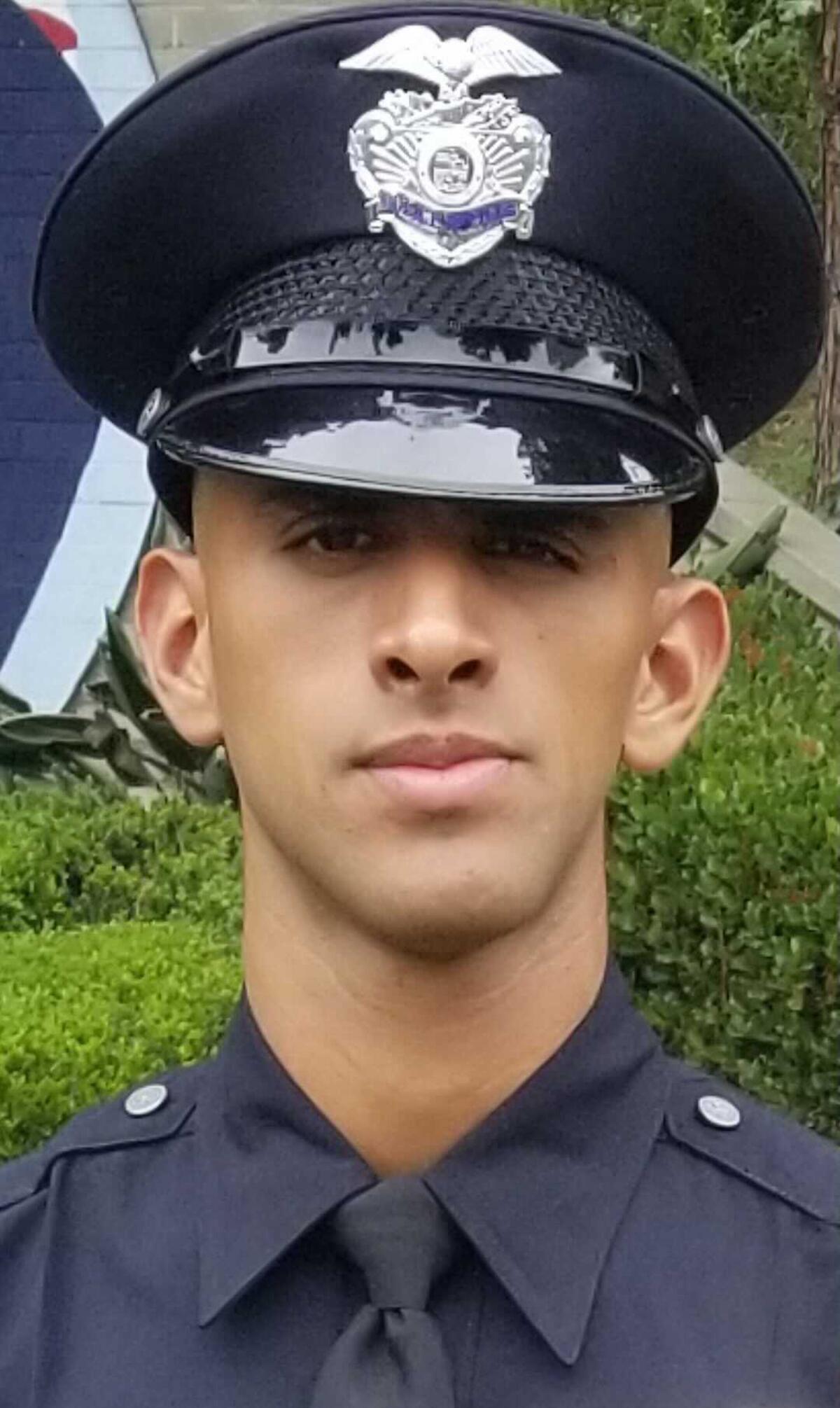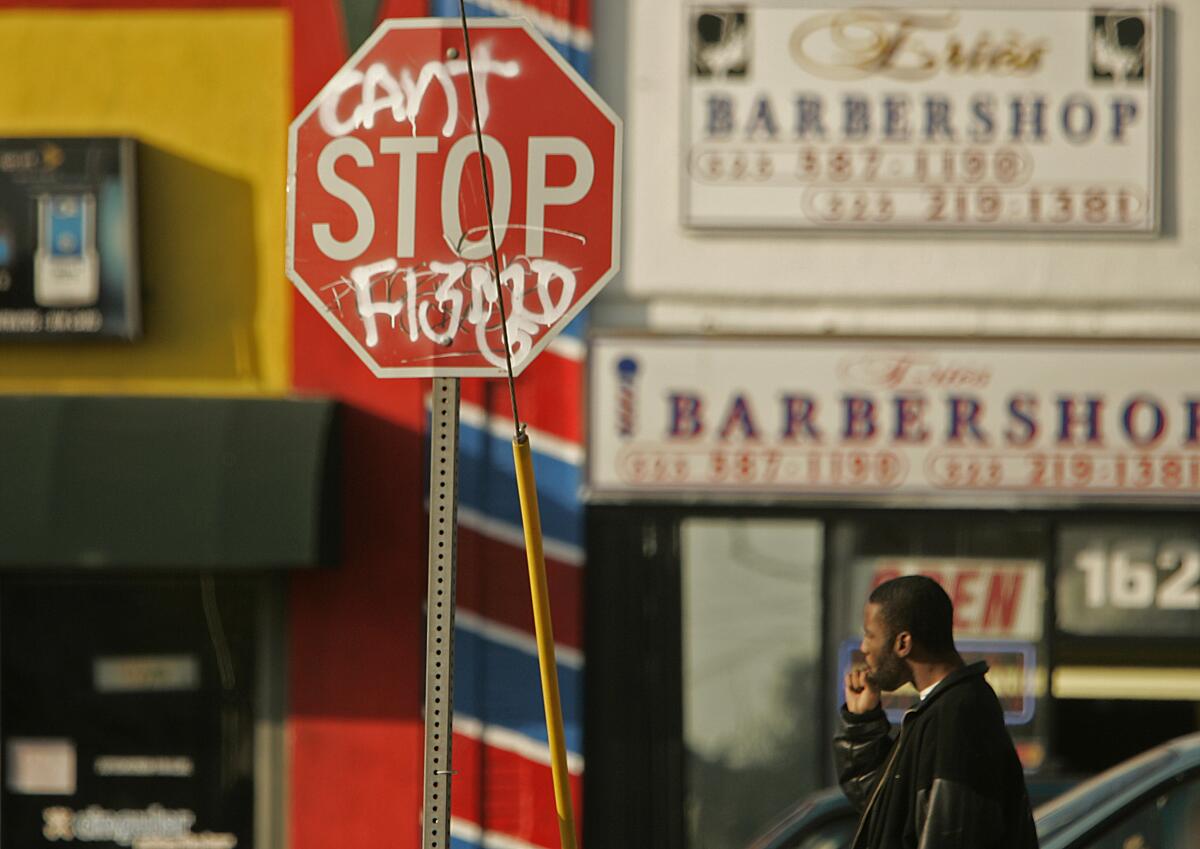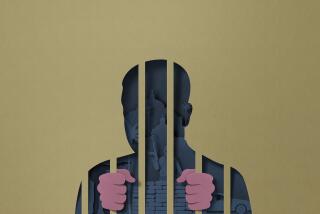Killing of LAPD officer brings scrutiny on one of L.A.’s oldest and largest gangs

- Share via
Seven decades ago, Latino youths in South Los Angeles banded together to form a gang. They called themselves Florencia, after the east-west thoroughfare that ran through the heart of their territory. Years of violent conflict over that territory with other gangs lent Florencia an identity and reason for being.
Over the years, demographic and social shifts have weakened many street gangs and caused some to die out altogether. Florencia did the opposite, law enforcement officials say, absorbing smaller gangs and expanding their extortion and drug dealing rackets on the orders of its leaders, who are incarcerated many hundreds of miles away.
The gang is now at the center of the killing earlier this month of an off-duty Los Angeles police officer.
Officer Fernando Arroyos, 27, was shot to death the night of Jan. 10 near the intersection of 87th and Beach streets. Police say he was with his girlfriend, looking at a house that he was thinking of buying, when two men robbed him at gunpoint of his wallet and jewelry. Arroyos and his assailants exchanged gunfire. The officer collapsed in an alley, mortally wounded.

Luis De La Rosa Rios, Jesse Contreras, Ernesto Cisneros and Haylee Grisham have been charged in federal court with Arroyos’ killing. The three men are members of Florencia-13, according to the FBI. Grisham, the girlfriend of Rios, is described as a gang associate. None could be reached for comment, and they have yet to enter pleas.
The particular charge that prosecutors have brought against the four — violent crime in aid of racketeering — means they must make the case that the defendants robbed and murdered Arroyos to maintain or increase their standing within Florencia-13.
Juries have found in a number of recent trials that Florencia-13 amounts to a racketeering enterprise, but in those cases, prosecutors had evidence — recorded calls, intercepted letters and jailhouse notes — that its leaders had directed the drug deals, shakedowns and murders that formed a pattern of racketeering activity.
In this case, the crime seems more opportunistic.
According to an FBI agent’s affidavit, one of the defendants has admitted that they were driving around, looking for someone to rob, when Rios spotted Arroyos and remarked, “He has a nice chain, let’s get it.”
::
The historic core of Florencia’s territory is bounded by Slauson Avenue to the north, 101st Street to the south, Central Avenue to the west and State Street to the east, Lt. Hector Velasquez of the Los Angeles County Sheriff’s Department testified in 2016. In time it absorbed smaller gangs, many of which became cliques, or subsets, of Florencia-13. The gang now has at least two dozen cliques across South Los Angeles, Huntington Park, South Gate and Maywood.
Its ranks are knitted together by blood. It’s common, authorities say, for members of the gang to have followed an uncle, a father or a grandfather into it.
The gang appended the “13” to its name in the 1990s, signaling its allegiance to the Mexican Mafia. The prison-based syndicate is also known as La Eme, Spanish for ‘M,’ the 13th letter of the alphabet. The organization is made up of about 140 men, all but a handful of them imprisoned, who rose through the hierarchies of local street gangs and the penal system by displaying a readiness to commit violence or an ability to make large amounts of money, according to law enforcement sources.
Four Florencia-13 members have gone on to join the Mexican Mafia, law enforcement officials have testified in prosecutions of the gang: Arturo Castellanos, known as “Tablas”; his brother Braulio, nicknamed “Babo”; Juan “Topo” Garcia and Leonel “Wizard” Laredo.
Arturo Castellanos has been incarcerated since 1979 for a murder conviction. Braulio Castellanos has been serving a life sentence since 1988 for two counts of second-degree murder. Garcia was released from federal prison in 2020 after serving a 17-year sentence for racketeering.
In 2018, prosecutors indicted Laredo and 25 other alleged members and associates of Florencia-13, charging that Laredo was collecting a percentage of the money made from drug deals, extortion and other crimes committed by the gang. He has pleaded not guilty, and the case has yet to go to trial.
A document seized by law enforcement in 2004 indicated the degree to which members of the Mexican Mafia controlled Florencia-13. Inside a home on 81st Street in South L.A., detectives found taped to the underside of a dresser a list of reglas — rules — assembled from various handwritten notes that had been pieced together, Velasquez, the sheriff’s lieutenant, testified.
The notes, he said, were written by Arturo Castellanos in his cell at Pelican Bay State Prison, where he was — and still is — serving a life sentence for murder.

The rules, written in a cramped hand, state that every Florencia-13 clique should elect by majority vote a president and vice president, who were to hold weekly meetings. Any gang member who had an issue with another was to bring it up at the clique meeting. “If an understanding cannot be reached, the pres from those [cliques] are to set a date for those two to box it out like real Florencianos,” the rules say. “And after they agree it’s over, it’s a dead issue.”
All cliques must “make sure you don’t get infested by rats, P.C.’s, or 25¢-debriefers” — gang members who cooperate with law enforcement — by checking the “paperwork,” or court files, of every Florencia-13 member coming out of jail. “It is the hood’s responsibility to clean the hood of such trash,” the rules state.
Florencia-13 members were forbidden from extorting “paisas slanging in the hood” — a reference, Velasquez testified, to Mexican nationals selling drugs in the gang’s territory. The dealers were already paying off the Florencia-13 leadership and supplying them with cocaine, he testified. “So all you homies doing so,” the rules say, “get a job!”
The document lays out which drugs can be sold where: Jailed Florencia-13 members in need of money were permitted to sell heroin in the county jail, but not “speed, glass, crank, or crystal.” No heroin was to be sold in gang territory on the streets. “Let those who use, get it on the outskirts.”
Gangs whose members have gone on to join the Mexican Mafia are less likely to be extorted or targeted for violence — “green-lighted” — than gangs that lack representation in the Mexican Mafia. In the rules seized by law enforcement, Arturo Castellanos allegedly told his gang that he and his brother “have shown you all our love for the barrio by making sure you homies never get taxed or green lighted by no one.”
But to hear prosecutors tell it, Arturo Castellanos’ grip on Florencia-13 led to a series of racially motivated attacks. In an indictment brought in 2007, authorities accused the gang of attacking members of rival Black gangs in an attempt to drive them from the Florence-Firestone area.
According to evidence presented at a racketeering trial in 2008, Arturo Castellanos, through a series of letters sent from prison, ordered his gang to attack members of the East Coast Crips, who claim a strip of South Los Angeles east of the 110 freeway.
The edict led to indiscriminate shootings of Black and Latino residents, as Florencia-13 members prowled the streets for targets and East Coast Crips committed retaliatory shootings of their own, witnesses testified. Many of the victims, Black and Latino, had no gang affiliations.
In recent years, however, Florencia-13 members have been directed to eschew violent inter-gang rivalries in favor of pursuing new rackets, said a former member of the gang, who spoke on condition of anonymity.
Florencia-13 has opened unlicensed dispensaries in South Los Angeles, selling not just marijuana out of the storefronts but cocaine and methamphetamine as well, the former member said. The indictment that prosecutors brought in 2018 charges that Florencia-13 members discussed collecting taxes from a marijuana shop.
The gang also operates casitas, underground casinos hidden inside South Los Angeles homes and apartments, which each generated about $300 a week in taxes for the gang, the indictment says. Patrons can play slot machines and other electronic games, buy and use narcotics, and meet sex workers at the establishments, according to testimony at an earlier racketeering trial.
Florencia-13 members also collect protection money from local merchants who seek help in keeping gang members from hurting their business, the former member of the gang said. A liquor store whose supply cases are being robbed of beer, a shopkeeper whose business is being graffitied, a barkeep whose patrons are being harassed, will sometimes offer to pay a Mexican Mafia member for protection, the former gang member said. For a monthly payment, typically between $200 and $250, he said, members of Florencia-13 and other gangs are warned that the business is under the auspices of a Mexican Mafia member.
There is no reliable estimate of how much money Florencia-13 generates for its Mexican Mafia overlords. But Laredo, an alleged member of the Mexican Mafia who has been incarcerated since 2000, was recorded in a call from prison telling an associate on the street that 40% of the money collected from the gang’s rackets was owed to the four Mexican Mafia members from Florencia-13, according to an indictment charging him with racketeering. He has pleaded not guilty.
More to Read
Sign up for Essential California
The most important California stories and recommendations in your inbox every morning.
You may occasionally receive promotional content from the Los Angeles Times.










